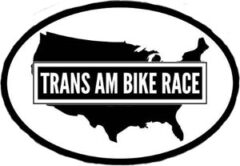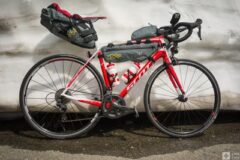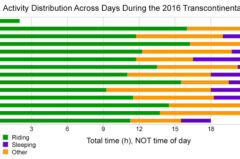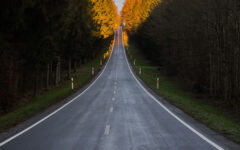The Trans Am Bike Race is a self-supported, ultra-distance bikepacking race across the USA. The fixed route is about 4,300 miles (6,900 km) long and goes from Oregon to Virginia. This article includes reports of the first 3 editions of the race in 2014, ’15 and ’16, including details of how Lael Wilcox became the first woman to win it overall in 2016.
Read more ...
Instead of doing multi-day training rides to prepare physically for bikepacking races, you should do them to test strategies and equipment and learn skills.
Read more ...
Sleep deprivation is dangerous for cyclists, so the risks involved in doing ultra-distance cycling and bikepacking races are discussed in light of this.
Read more ...
A variety of sleeping strategies and sleeping equipment are presented that people in bikepacking races use to get some efficient rest.
Read more ...
Time efficiency when off the bike is at least as important as cycling speed in bikepacking and ultra-distance cycling races in which the clock never stops.
Read more ...
Having a planned schedule & updating it frequently helps ultra-distance cyclists stay focused, motivated & assess their rate of progress towards the finish.
Read more ...
Ultra-distance cyclists need to maintain a positive mental approach and deal with intense emotions. Physical exhaustion & mental fatigue make this difficult, but being prepared and aware can help you to get through the difficult times.
Read more ...
Aerodynamics, weight, rolling resistance & mechanical resistance all determine cycling speed, but how much do each of these affect long-distance cyclists?
Read more ...
How much does it cost to do a self-supported bikepacking race? Costs for travel, accomodation, food, and training are estimated for the Transcontintel Race.
Read more ...








